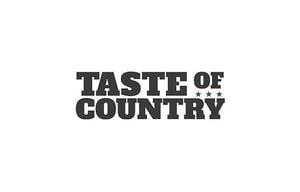With the healthcare field battling against the impacts of Hurricane Helene, hospitals across the nation are making tough decisions to manage the dwindling supply of IV fluids. Presbyterian, New Mexico's largest hospital system, has jumped on board with plans to limit the use of these fluids, adopting various strategies to help conserve what’s left. This initiative could have significant ramifications, especially as patients continue to rely on these intravenous treatments for hydration and medication.
According to internal communications obtained by the Rio Rancho Observer, the directive to limit IV fluid usage came as part of the organization's efforts to respond proactively to the crisis. The email outlined specific measures, including switching patients from IV to oral fluids wherever feasible. This shift not only aims to lessen the demand for IV fluids but also to direct resources where they are most needed during this challenging time.
The situation stems from the aftermath of Hurricane Helene, which disrupted shipments and contributed to widespread shortages across the country. Due to weather-related issues, many manufacturers faced delays, leaving hospitals scrambling to stock adequate supplies. This naturally raised concerns about how patient care could be affected if the shortage continued.
The Presbyterian system’s plan includes suggestions such as replacing IV fluids only every 72 hours, changing administration methods, and striving to use the smallest volume of IV fluids where necessary. These strategies represent thoughtful responses to potential patient needs without compromising care quality.
Even though the changes may seem operationally focused, the heart of the matter lies with patient health and safety. It's common for hospitals to use IV fluids for various purposes—hydration, delivering medications, and nutritional support. Now, with constraints on supply, hospitals are putting concerted efforts to prioritize patients who absolutely need IV therapy over those who could be transitioned to oral alternatives.
This resourcefulness isn't unique to Presbyterian alone; many hospital systems across the U.S. are trying to strike the right balance between care and resource management. For example, other hospitals have begun assessing their overall product inventories to formulate plans centered on efficiency, pushing for collaborations with suppliers to replenish stock more quickly.
Emergency room physicians and nurses have reported feeling the pressure of the situation, emphasizing how challenging it can be to ration supplies without compromising patient care. They find themselves having to make hard choices, weighing the urgency of each patient's situation against the supplies available. While the hope is to conserve as much as possible, the horror stories of what can happen if fluids run out or are limited are deeply concerning.
During this shortage, some hospitals have turned to alternative methods of treatment. Medical professionals are being encouraged to utilize medications or treatments with equivalent effectiveness to IV fluids when clinically appropriate. By leveraging telehealth consultations and encouraging patients to hydrate on their own, hospitals aim to mend gaps without relying solely on liquid infusions.
Interestingly, some patients have even found support among healthcare providers who are educating them on potential home remedies or oral alternatives, though such support needs to be carefully monitored to maintain safety and sufficiency.
While this shortage poses immediate challenges, there’s also the underlying lesson it provides. Many healthcare systems see it as undeniable proof of the need for strategic preparations and stronger supply chains to minimize future setbacks. It's opened the door to discussions about long-term resilience strategies, including how to proactively stock and manage medical supplies and devising plans to fend off future shortages.
Looking forward, hospitals remain optimistic about improving supply lines and returning to normal IV fluid use levels. But for now, they continue to adapt and maneuver within this shifting terrain, focusing on what they can control—patient care and safety. They are constantly reminded of the trust patients place in their hands, and they aim to uphold this with the modifications being enacted.
Each adjustment, be it small or significant, is geared toward ensuring resources remain available for those who need them most. It's not just about avoiding waste but about fostering recovery and healing even amid turbulent times. Through determination and innovation, hospitals like Presbyterian are reflecting resilience as they navigate the fluid and complex world of healthcare.
Waiting for the storm clouds to clear, the healthcare community's perseverance is on display, and they stand united against the challenges of the present, driven by the mission to heal and support. This challenging moment may reshape how hospitals think about resource management and prepare for future crises, potentially leading to long-overdue reforms across the healthcare sector.



